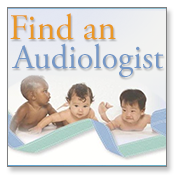Recommendations and Guidelines
Newborn Screening Contingency Plan, Version II, 2017
The intent of the Contingency Plan is to facilitate collaboration among federal agencies and state, local, territorial, tribal, and regional efforts to screen newborns for identified conditions during a public health emergency. This effort is limited to those areas of the newborn screening system (screening test, diagnosis and follow-up, treatment and management, evaluation, and education), for which the state public health agency assumes an oversight role.
American Academy of Pediatrics (AAP) Early Hearing Detection and Intervention Guidelines
American Academy of Pediatrics EHDI has published guidelines for the medical home related to rescreening and loss to documentation. AAP EHDI provides flyers on NEWBORN HEARING SCREENING: LOST TO DOCUMENTED FOLLOW-UP CONSIDERATIONS FOR THE MEDICAL HOME and GUIDELINES FOR RESCREENING IN THE MEDICAL HOME FOLLOWING A ‘DO NOT PASS’ NEWBORN HEARING SCREENING
Read more about this recommendation
American Academy of Audiology Childhood Hearing Screening Guidelines, September 2011
The American Academy of Audiology endorses detection of hearing loss in early childhood and school‐aged populations using evidence‐based hearing screening methods. The goal of early detection of new hearing loss is to maximize perception of speech and the resulting attainment of linguistic‐based skills. Identification of new or emerging hearing loss in one or both ears followed by appropriate referral for diagnosis and treatment are first steps to minimizing these effects. Informing educational staff, monitoring chronic or fluctuating hearing loss, and providing education toward the prevention of hearing loss are important steps that are needed to follow mass screening if the impact of hearing loss is to be minimized.
Read more about this recommendation [PDF – 684 KB]
Joint Committee on Infant Hearing Year 2007 Position Statement
Joint Committee on Infant Hearing (JCIH) is made up of representatives from national organizations dedicated to ensuring early identification, intervention and follow-up care of infants and young children with hearing loss. Since its establishment in 1969, the JCIH has issued position statements with guidelines for early hearing detection and intervention.
- 2007 Position Statement: Principles and Guidelines for Early Hearing Detection and Intervention Programs [Read more about this recommendation]
- Supplement to the JCIH 2007 Position Statement: Principles and Guidelines for Early Intervention After Confirmation that a Child is Deaf or Hard of Hearing [Read more about this recommendation]
American Speech-Language and Hearing Association Hearing Screening Guidelines, 1997
ASHA’s strong commitment to the prevention and early detection of audiologic disorders is evidenced by Article II of the ASHA Bylaws that states: (one of) “the purposes of this organization shall be to … promote investigation and prevention of disorders of human communication.” Primary prevention includes altering susceptibility or reducing exposure to causes of hearing loss. Audiologic screening serves a secondary prevention function; that is, if a hearing disorder, impairment, or disability is detected and treated early, potential hearing-related problems can be prevented or ameliorated. Screening refers to a specific way to indicate need for further assessment for a disorder, impairment, or disability.
Read more about this recommendation
Universal Screening for Hearing Loss in Newborns
From the U.S. Preventive Services Task Force (USPSTF)
The USPSTF recommends screening for hearing loss in all newborn infants. Because half of the children with hearing loss have no identifiable risk factors, universal screening (instead of targeted screening) has been proposed to detect children with permanent congenital hearing loss (PCHL). There is good evidence that newborn hearing screening testing is highly accurate and leads to earlier identification and treatment of infants with hearing loss.
Read more about this recommendation
Early Identification of Hearing Loss: Universal Newborn Hearing Screening (An Implementation Guide)
From the National Center for Hearing Assessment and Management
This electronic “e-book” outlines some of the most important issues which need to be addressed in implementing and operating a successful early identification of hearing loss program for newborns.
- Page last reviewed: October 10, 2017
- Page last updated: October 10, 2017
- Content source:



 ShareCompartir
ShareCompartir